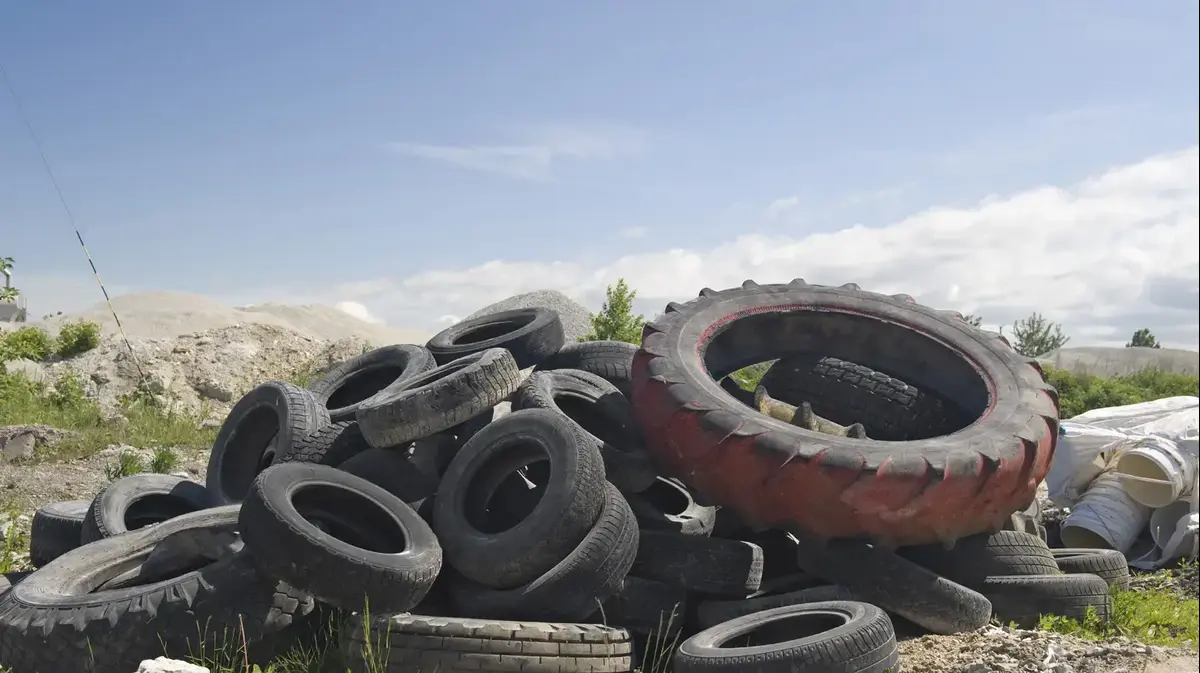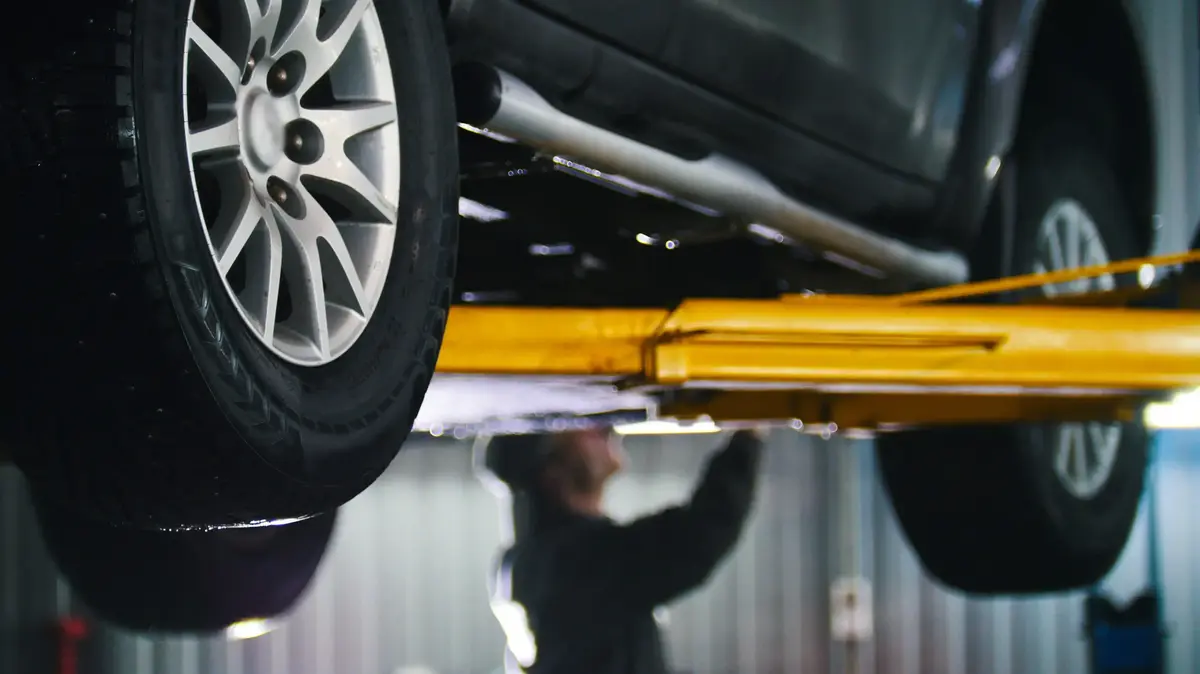It's a tin tire, but in a really good section
A new tire developed by Goodyear will be made mostly from recycled and environmentally friendly materials.
This is to reduce the environmental damage caused by the production of tires today
Jonathan Singer, Angle
24/03/2022
Thursday, 24 March 2022, 10:00 Updated: 10:22
Share on Facebook
Share on WhatsApp
Share on Twitter
Share on Email
Share on general
Comments
Comments
Recycled tires (angle)
The issue of tire waste has made international headlines recently following the moving story of an Indonesian crocodile, a shirt from a tire that wrapped around her neck like a heavy and restrictive chain for no less than six years.
The tire that bound the crocodile is just one of more than 2 billion tires sold worldwide each year.
The production of the natural and synthetic materials that make them up causes the creation of tropical forests, the aggravation of the climate crisis and pollution by microplastics (microscopic plastic waste).
A new development by veteran tire company Goodyear, recently unveiled at the annual CES Exhibition in Las Vegas, could change the situation and start the environmental revolution in the tire industry as well.
This is a tire that is made from 70 percent recycled and environmentally friendly materials - with the plan being to reach 100 percent by 2030. So how is the new tire different from the tires used today?
More on Walla!
Everyone Can: Car Wheel Replacement Guide
To the full article
6 years with a tire wrapped around his neck (Photo: AP)
One tire, many environmental impacts
Tires are now made mainly of rubber, with about 19 percent of their composition being natural rubber, extracted from the rubber wood (Hevea brasiliensis), and 24 percent is synthetic rubber made of plastic (in truck tires the percentage of natural rubber is higher).
Both types of rubber have not particularly sympathetic environmental effects.
The tire industry consumes about 70 percent of the natural rubber produced in the world, and the demand for it only increases with the annual increase in the number of tires produced.
To grow the rubber tree, farmers in countries like Thailand, Indonesia, Vietnam and Malaysia are creating forests that are important for mitigating the climate crisis and maintaining the dwindling biodiversity in the world.
Tire debris harms the environment even after their use has ended (Photo: AP)
When it comes to synthetic rubber, which is made of plastic, it is estimated that tire wear throughout their use is responsible for up to 28 percent of all microplastic particles, which can be found almost everywhere in the world - from the summit of Everest to lettuce near the jade.
Numerous pieces of evidence point to the destructive effects of microplastics on animals that feed on it accidentally, especially in the marine environment, and there is evidence that it may also be harmful to human health.
In addition to rubber, the composition of the tires now also includes about 12 percent metal, which can pollute the environment when it is buried in the ground;
About 26 percent of fillers made of carbon black (a material usually produced from various fuels) and silica, materials that strengthen the durability of the rubber and improve performance in terms of road grip;
About 4 percent of textiles and about 14 percent of various materials used to stabilize the rubber in the process of making the tire and materials designed to prevent the wear and tear created by the tire's exposure to air throughout its life.
Some reach the heart of the sea, emit toxic particles and from there to the fish and back to our plates (Photo: AP)
Balance safety and environment
Goodyear's new development encodes environmental improvements over current tires.
It can help reduce the use of environmentally harmful materials and find more sustainable alternatives to these materials, which use renewable and perishable raw materials or recycled materials.
For example, some of the plastic components of new tires are made by recycling plastic bottles.
The tires are also made up of alternative materials to plastic - one of which, which is also used as a substitute for silica, is rice husk ash: a by-product of the rice industry that is not usually used.
Finally, instead of using fossil fuels to produce carbon black, the company found three environmentally friendly alternatives: capturing carbon directly from industrial emissions and converting it into a substance, using vegetable fuels (such as soybean oil) to produce it, and producing the material using methane in a unique process. Of carbon dioxide emissions - although it is necessary to test this claim, due to the fact that methane is also a dangerous greenhouse gas).
The new and more environmentally friendly tire currently only exists as a model, and the company is currently conducting safety and use tests.
It is planned to be an intermediate stage on the way to the destination of a tire made from 100 percent environmentally friendly materials, set for 2030.
According to the company, one of the big challenges in choosing new materials for tires today is the need to balance the necessary consideration of maintaining their safety and performance with environmental considerations.
Goodyear recycled tire (Photo: Goodyear website)
What happens to used tires?
Even if and when tires are put on the road that are made from 100 percent recycled and environmentally friendly products, one problem will still not be solved: care for them after they finish their lives and pile up in the tire shop.
"Untreated tires are a flammable material that can cause fire and air pollution or water and river pollution. They are a problem of the environment, and when water accumulates in them, they can be a breeding ground for mosquitoes," said Alaa Masarwa Bucky, a former senior law firm. For environmental protection.
In 2007, the Tire Disposal and Recycling Law came into force in Israel, which was intended to reduce the environmental nuisances caused by improper tire recycling, and which imposed the responsibility for tire recycling on tire importers and manufacturers in Israel.
According to the law, tire manufacturers and importers must recycle at least 85 percent of the weight of tires marketed in Israel, and an importer must recycle about 25 percent of the tires he markets.
According to the law implementation report for the years 2020-2019, about 85 percent of tire importers meet the recycling target set by law, as well as about 100 percent of car importers (although a number of importers did not submit a report as required).
Use of soy as a substitute for synthetic materials (Photo: Manufacturer's website, Goodyear)
Either way, according to Masarwa Bucky, work on the issue is far from over.
"There is a gap in the 2007 law, and it requires amending legislation," she explains.
According to her, the target for tire recycling in Europe is much higher than in Israel, and stands at no less than 100 percent.
"Today, no one in Israel is obligated to collect and recycle tires beyond the quota, so no one knows what happens to the other tires. In addition, the information about the quantity of tires now depends entirely on the report of importers and manufacturers."
Another problem that Masarwa Bucky addresses is that today the activities of the recycling plants, which produce high-quality rubber, textiles and iron that allow for reuse, are not economically viable.
"Today the regulator has no authority to control the price that manufacturers and importers pay to recycling plants," she says.
A possible solution to this is the establishment of a recognized body on behalf of the state that will manage the entire recruitment system of 'hitchhiking' importers (which are not currently reported), report the importers, collect the tires and recycle them. It pays off - and on the part of consumption, a determination of a certain percentage of mandatory use of recycled materials for the industries, in order to create a market for recycled materials in Israel. "
Masarwa Bucky's recommendations for amending the legislation also appear in the report implementing the Tire Act that she participated in writing in July 2020. "Amendments should be made to the law that will adapt it to the situation of 2022," she concludes.
The article was prepared by Zavit - the news agency of the Israeli Association of Ecology and Environmental Sciences
vehicle
Tags
viscous
Tires
cycle
Recycling
The environment












